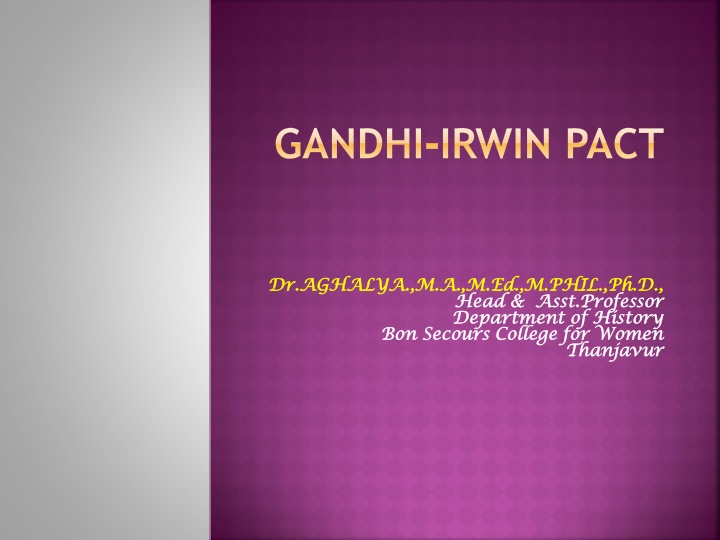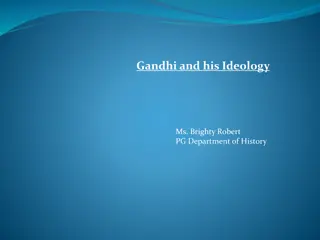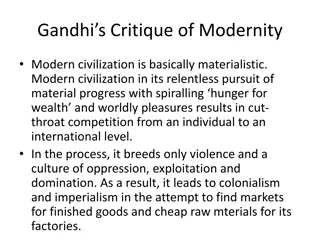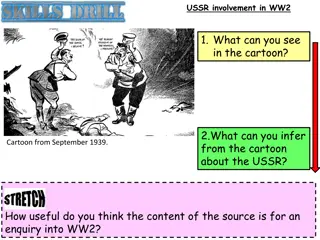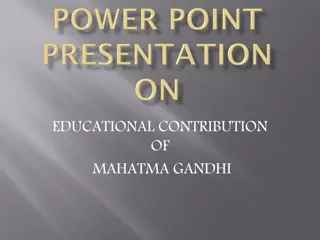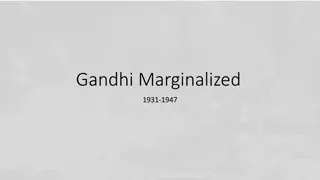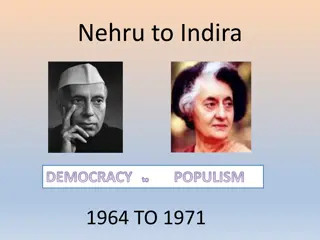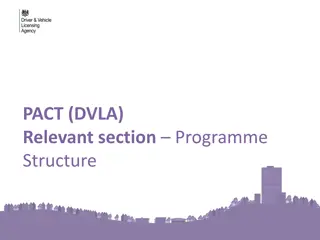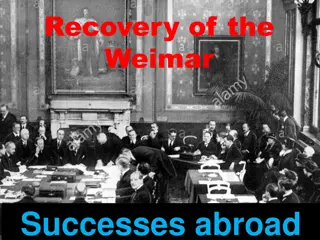Gandhi-Irwin Pact and Its Significance in Indian History
The Gandhi-Irwin Pact, signed in 1931, was a pivotal moment in India's independence movement. It marked a shift in British-Indian relations and led to the withdrawal of civil disobedience movements. The pact included agreements on the Round Table Conference, withdrawal of ordinances, prosecution, and the removal of the salt tax. It showcased Gandhi's negotiation skills and the Congress's willingness to engage in diplomatic discussions.
Download Presentation

Please find below an Image/Link to download the presentation.
The content on the website is provided AS IS for your information and personal use only. It may not be sold, licensed, or shared on other websites without obtaining consent from the author.If you encounter any issues during the download, it is possible that the publisher has removed the file from their server.
You are allowed to download the files provided on this website for personal or commercial use, subject to the condition that they are used lawfully. All files are the property of their respective owners.
The content on the website is provided AS IS for your information and personal use only. It may not be sold, licensed, or shared on other websites without obtaining consent from the author.
E N D
Presentation Transcript
GANDHI-IRWIN PACT Dr.AGHALYA.,M.A.,M.Ed.,M.PHIL., Dr.AGHALYA.,M.A.,M.Ed.,M.PHIL.,Ph.D Head & Head & Asst.Professor Department of History Department of History Bon Secours College for Women Bon Secours College for Women Ph.D., ., Asst.Professor Thanjavur Thanjavur
INTRODUCTION The rejection of demands put forward by Mahatma Gandhi in Delhi Manifesto led to Lahore Congress session. Later, under the civil disobedience movement, Gandhi put forward 11 demands and gave an ultimatum of January 31, 1930, to accept or reject. In July 1930 the viceroy, Lord Irwin, suggested a round table conference and reiterated the goal of dominion status.
GANDHI-IRWIN PACT. On January 25, 1931, Gandhi and all other members of the Congress Working Committee (CWC) were released from jail unconditionally. The CWC authorised Gandhi to initiate discussions with the viceroy Lord Irwin. Later a pact was signed in Delhi, which came to be known as Delhi-Pact or Gandhi-Irwin Pact.
BACKGROUND OF GANDHI-IRWIN PACT The Second Round Table Conference was to be held in 1931 in London. In 1930, the Salt Satyagraha was conducted and India and Gandhi received worldwide attention. The British government in India was criticised for its unjust treatment of Indians. Gandhi and many other leaders were imprisoned along with thousands of Indians.
BACKGROUND OF GANDHI-IRWIN PACT Lord Irwin wanted the issue to come to an end. So, Gandhi was released from prison in January 1931. The then Congress President Sardar Vallabhai Patel authorised Gandhi to hold talks with Lord Irwin. Accordingly, Gandhi met Irwin and held negotiations. It was for the first time that the two were meeting as equals .
FEATURES OF GANDHI-IRWIN PACT The Indian National Congress (INC) agreed to take part in the Round Table Conference. The INC would stop the civil disobedience movement. Withdrawal of all ordinances that curbed the activities of the Congress.
FEATURES OF GANDHI-IRWIN PACT Withdrawal of all prosecutions except those involving violent crimes. Release of those who were arrested for taking part in the civil disobedience movement. Removal of the salt tax.
RESULT OF GANDHI IRWIN PACT The INC participated in the Second Round Table Conference which was held in 1931 during September December. The government agreed to withdraw all ordinances. It agreed to release all political prisoners to save those involved in violence. It agreed to allow peaceful picketing of liquor and foreign cloth shops. It agreed to revoke the ban on the INC.
RESULT OF GANDHI IRWIN PACT It agreed to restore the confiscated properties of the Satyagrahis. It agreed to permit the collection of salt by people near the sea coasts. It agreed to forego fines not yet collected. It agreed to the lenient treatment of all government servants who had resigned from service in the wake of the civil disobedience movement.
